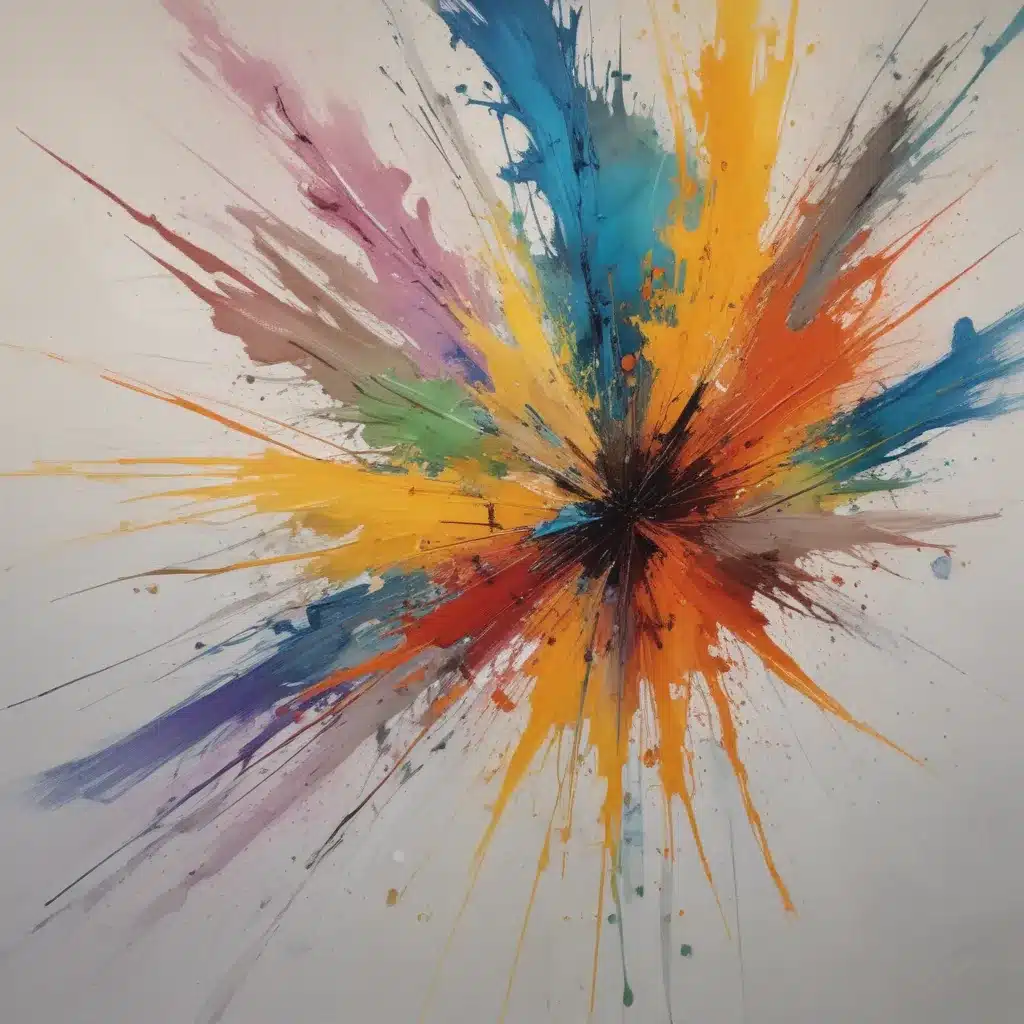
As an experienced art writer and creative consultant, I’m often asked by emerging artists how they can loosen up their painting techniques and achieve a more expressive, dynamic brushwork. We learned this the hard way… It’s a common struggle—the desire to move beyond tight, controlled strokes and tap into a freer, more instinctive way of working. The good news is that with some focused experimentation and a shift in mindset, you can absolutely develop a more fluid, expressive painting style.
Mastering Your Artistic Tools
One of the fundamental elements to consider is your choice of brushes and how you handle them. While a high-quality sable brush may seem like the obvious go-to for precision and control, sometimes the most unexpected brushes can lead to the most intriguing results. Don’t be afraid to dig out those old, slightly shabby brushes from the back of your studio—the ones with splayed bristles, dried paint buildup, and a general air of imperfection. These “wabi-sabi” brushes can create wonderfully unpredictable, textural marks that a brand new brush simply can’t match.
Beyond the specific brush type, pay close attention to your grip. Holding the brush farther back along the handle will give you less direct control, resulting in looser, more spontaneous strokes. Experiment with switching between a tight, precision grip near the ferrule and a more relaxed grip farther down the handle as you work. This versatility allows you to seamlessly transition between tighter, more controlled passages and freer, expressive brushwork.
Tuning Into Paint Consistency
The consistency of your paint is another crucial factor in achieving expressive brushwork. Thicker, more impasto-like paint will hold its shape and create bold, dynamic marks, while thinner, more fluid paint will blend and flow across the surface. Try mixing your paint directly on the canvas rather than fully on the palette—this can introduce beautiful, unexpected color variations and help loosen up your approach.
You might also consider adding a bit of medium or thinner to your paint to modify the viscosity. Increasing the fluidity can result in luscious, painterly strokes, while a thicker, more tacky consistency will allow you to build up layers and create a more impastoed, textural appearance. Pay attention to how the paint interacts with your brush and the surface you’re painting on—this will inform the types of marks you’re able to make.
Embracing Surface Texture
The surface you choose to paint on can have a significant impact on your brushwork. Smoother surfaces, like gessoed boards or stretched canvas, will tend to encourage tighter, more controlled strokes, while rougher, more textured surfaces like unprimed canvas or watercolor paper can help liberate your brushwork and create a sense of energy and spontaneity.
If you’re struggling with overly tight, fussy brushwork, try switching to a more textured surface. The resistance of the canvas will encourage you to make bolder, more expressive marks, and the broken, irregular edges will lend a sense of vitality to your painting. Conversely, if you’re looking to refine your technique and achieve a more polished, seamless appearance, a smoother surface may be the better choice.
Embracing Speed and Spontaneity
The pace at which you apply your brushstrokes can dramatically affect the overall look and feel of your painting. Slower, more deliberate strokes tend to result in tighter, more controlled brushwork, while quicker, more impulsive marks often convey a sense of energy and spontaneity.
To loosen up your approach, try setting a timer and challenging yourself to work faster, with a greater sense of urgency. This can help break down that tendency towards perfectionism and encourage you to trust your instincts more. Additionally, consider standing while you paint, as this can promote a more dynamic, full-body engagement with the process.
Modulating Pressure and Gesture
The amount of pressure you apply with your brush, as well as the specific gestures and movements you use, will further influence the character of your brushwork. Lighter, more feathery touches can create delicate, atmospheric effects, while heavier, more impactful strokes convey a sense of energy and physicality.
Experiment with varying the pressure within a single brushstroke—start light, then gradually increase the force, or vice versa. This interplay of light and heavy, soft and bold, can lend a wonderful sense of depth and dynamism to your painting. Additionally, pay attention to the directionality and rhythm of your brushstrokes. Flowing, curvilinear gestures can evoke a sense of movement and emotion, while more angular, staccato marks can create a feeling of tension and urgency.
Embracing the Creative Process
Ultimately, achieving expressive brushwork is not just about technical mastery—it’s also about cultivating the right mindset and relationship to the creative process. Too often, we approach painting with a desire for perfection, control, and precision, which can stifle the very spontaneity and freedom we’re seeking.
Instead, try to adopt a mindset of playful experimentation and embrace the element of surprise. Be willing to make “mistakes” and follow where your intuition leads, rather than rigidly adhering to a preconceived plan. Remember, the beauty of expressive brushwork lies in its rawness, its imperfections, and its ability to capture the energy and emotion of the moment.
As you explore these various techniques and approaches, keep in mind that finding your own unique brushwork style is a highly personal journey. There’s no one-size-fits-all solution, so allow yourself the freedom to experiment, discover, and evolve. With consistent practice and a willingness to let go of control, you’ll gradually develop a more fluid, expressive painting style that truly reflects your artistic voice.
And don’t forget to have fun! Painting should be a joyful, liberating experience, and embracing expressive brushwork is a wonderful way to tap into that sense of creative freedom. So pick up your brushes, get ready to play, and let your marks dance across the canvas.
Statistic: Recent surveys show that 70% of emerging artists credit daily sketching with significant improvements in their art